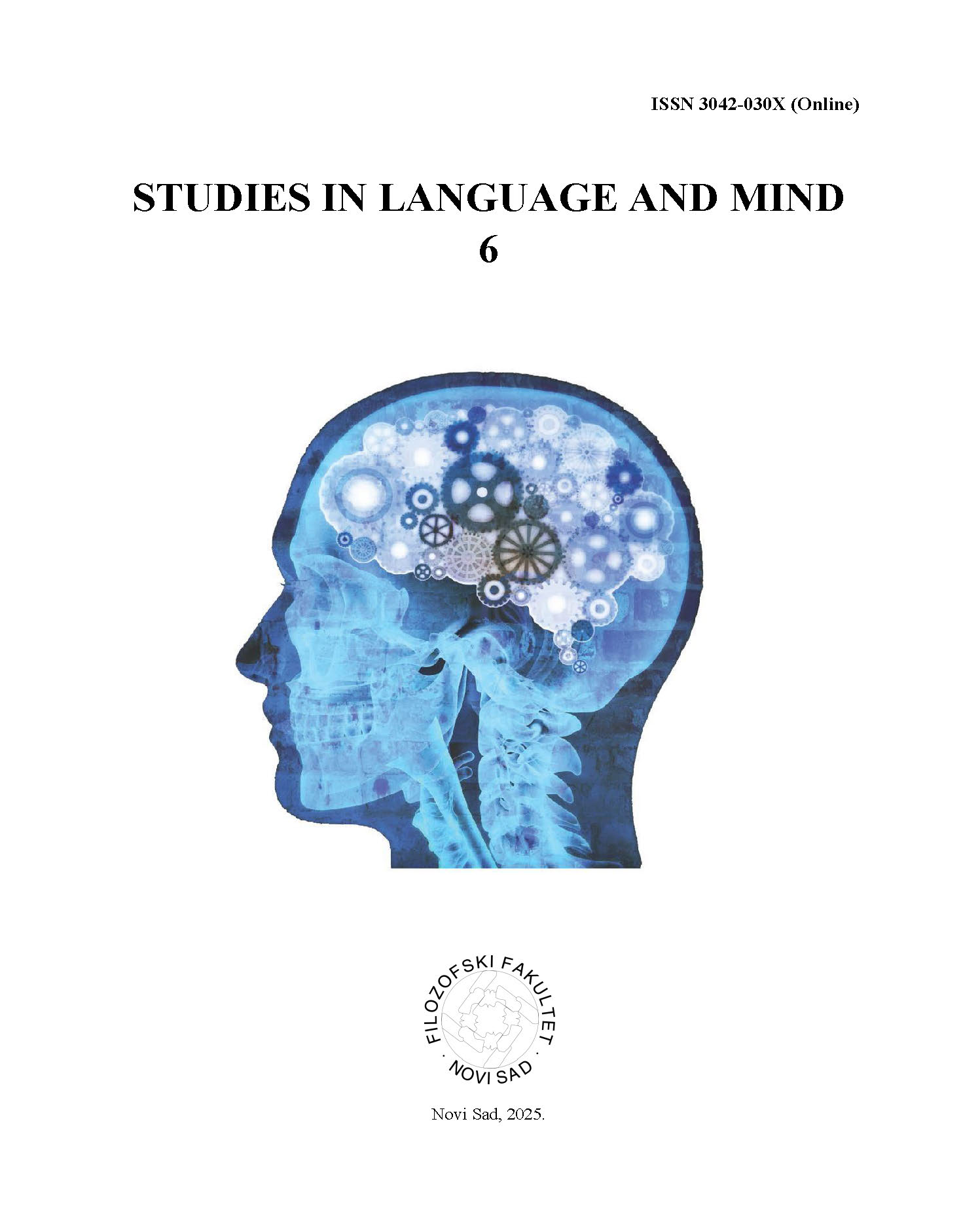Aims and Scope of the Journal
The journal aims to provide a multidisciplinary platform for researchers, scholars, and practitioners to explore the intricate connections between language, cognition, and the human mind and to foster discussions that bridge theoretical perspectives with empirical research, ultimately contributing to the fields of linguistics, cognitive science, psychology, and neuroscience.
The journal will publish articles that incorporate insights from various disciplines, including linguistics, psychology, cognitive neuroscience, anthropology, and artificial intelligence. This interdisciplinary approach will enrich the understanding of language as a cognitive phenomenon. Contributions on the following suggested topics are welcomed by the journal:
- how individuals process language in real-time
- neural mechanisms underlying language processing
- how language influences cognitive development across the lifespan
- language impairments, their cognitive underpinnings, and therapeutic interventions
- research into specific populations (e.g., individuals with aphasia or developmental language disorders)
- the intersection of language and technology (natural language processing, computational linguistics, and artificial intelligence applications)
- other topics within the fields of psycholinguistics, neurolinguistics, clinical linguistics, cognitive sciences, biolinguistics and language development, researching the neurocognitive foundations of language in linguistically non-impaired and impaired populations.
Current Issue
No. 6 (2025)
Full Issue
Journal Submission Stylesheet
General Policies
- Originality:
- Manuscripts must not have been previously published or submitted for publication elsewhere.
- Co-authored manuscripts must list all contributing authors and designate one corresponding author for communication with the editorial team.
- Changes to authorship (addition, deletion, rearrangement) are not permitted after submission.
- AI Use:
- Generative AI and AI-assisted technologies are permitted only to enhance readability and language. Content generation, data interpretation, or conceptual contributions by AI must not be included.
- Ethical Compliance:
- Submissions must comply with ethical research guidelines (e.g., informed consent, IRB approval).
- Authors must declare all funding sources and disclose any potential conflicts of interest.
Submission Guidelines
- Language: Submissions must be in English, using standard academic grammar and style.
- Submission Format:
- Manuscripts should be sent electronically in .doc or .docx format to slm@ff.uns.ac.rs .
- Deadline for submissions: June 30th each year.
- File Formatting:
- Font: Times New Roman, 12 pt for main text, 11 pt for long block citations, 10 pt for footnotes.
- Line Spacing: 1.5 for main text; single for abstract and block citations.
- Alignment: Fully justified. Avoid dividing words at the end of lines.
- Margins: Standard A4, with page numbers inserted at the bottom-right corner.
- Paragraph Formatting: First-line indentation of 1.5 cm (via Paragraph > Indentation > Special: First Line).
Title Page
The title page should include:
- Author(s):
- Full name(s) and institutional affiliations.
- Use superscripts for multiple affiliations (e.g., ¹, ²).
- Title:
- Centered, uppercase, concise, and descriptive.
- Add a subtitle if needed to improve clarity.
- Character Count: Total characters (including footnotes and references).
- Footnotes:
- Asterisk (*): Corresponding author’s email.
- Double asterisk (**): Acknowledgments, funding details, conference presentations, or project affiliations.
Abstract and Keywords
- Abstract:
- A one-paragraph text of up to 200 words.
- Includes the research objective, methods, results, and conclusions.
- Font size: 10 pt, single line spacing, and indented first line.
- Keywords:
- Include 5–10 keywords for indexing purposes, introduced by the word Keywords:
Article Structure
The manuscript should include the following sections:
- Author Details (first and last name of each author).
- Title
- Abstract and Keywords.
- Main Text:
- Headings:
- Major Headings: Uppercase, centered.
- Subheadings: Italicized and indented at 1.5 cm.
- Tables and graphs should be in Word format, numbered consecutively, and placed with captions above.
- Legends for abbreviations in tables and graphs should be placed below them.
- Summary: A concise overview of the findings and their significance.
Citations and References
In-text Citations:
- Follow APA 7th edition style.
- Example: (Smith, 2020) or Smith and Jones (2018).
- Use double quotation marks for direct quotations.
- For nested quotes, use single quotation marks (‘...’).
Reference List:
- Format: Font size 12 pt, with a hanging indentation of 1.5 cm.
- Ordering: Alphabetical by authors’ last names.
- Style: APA 7th edition.
- Examples:
- Books (Single Author):
- Pinker, S. (2007). The language instinct. Harper Collins.
- Books (Co-authors):
- Albert, M., & Obler, L. (1978). The bilingual brain: Neuropsychological and neurolinguistic aspects of bilingualism. Academic Press.
- Edited Volumes:
- Boye, K., & Kehayov, P. (Eds.) (2016). Complementizer semantics in European languages: Workshop on Semantic Functions of Complementizers in European Languages. Empirical approaches to language typology 57. Mouton De Gruyter.
- Journal Articles:
- Daltrozzo, J., & Schön, D. (2009). Conceptual processing in music as revealed by N400 effects on words and musical targets. Journal of Cognitive Neuroscience, 21(10), 1882-1892. https://doi.org/10.1162/jocn.2009.21113
- E-books:
- World Health Organization. (2004). ICD-10: international statistical classification of diseases and related health problems: tenth revision (2nd ed). World Health Organization. https://apps.who.int/iris/handle/10665/42980
Formatting for Tables and Graphs
- Placement: Include within the text, with captions above and legends below.
- Numbering: Consecutive numbering (e.g., Table 1, Table 2).
Length and Formatting Compliance
- Length:
- Minimum: 20,000 characters.
- Maximum: 32,000 characters, including all elements.
- Submissions not meeting formatting or length requirements will be rejected without review.
